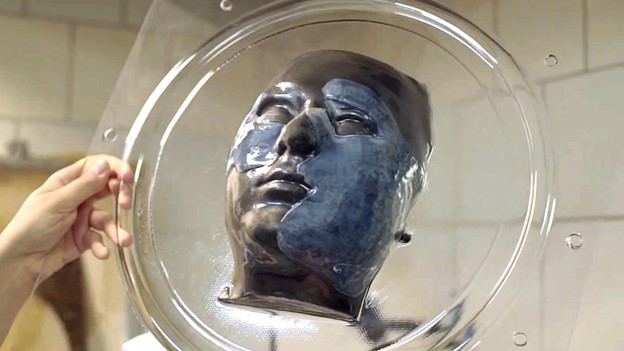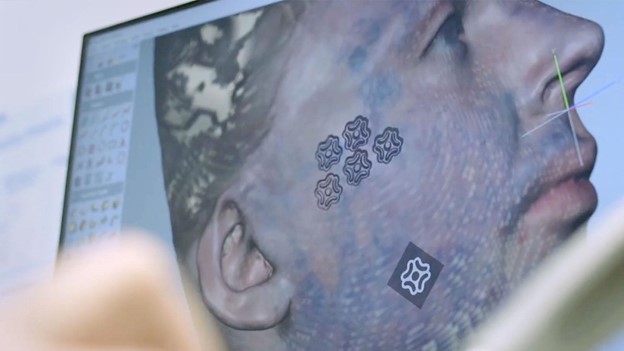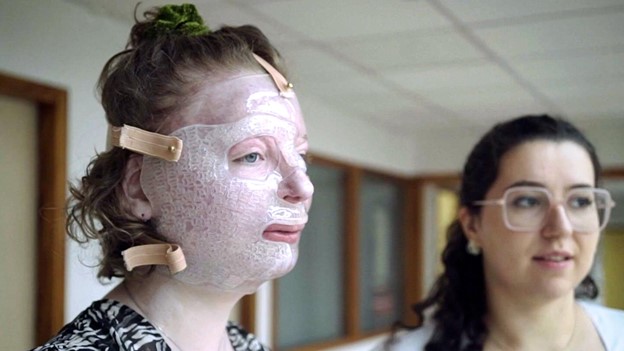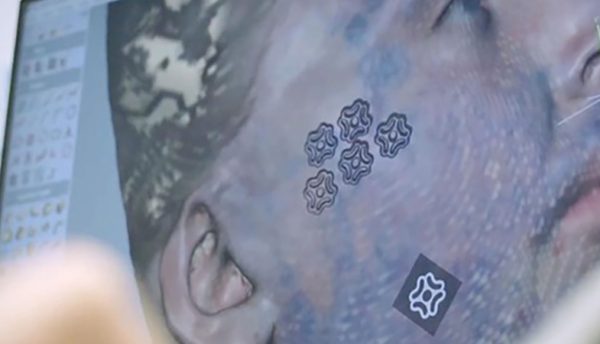Artec 3D has collaborated with Romans Ferrari, a paediatric rehabilitation facility, to revolutionise the medical process for children who have suffered facial burns. Using Artec’s 3D scanners, medical professionals are now able to create highly precise compressive masks that depart from painful traditional plaster methods. Varvara Koneva, Artec 3D Spokesperson tells us more about the situation and its challenges, as well as the importance of the technology designed to help treat the severely burned children.
Paediatric burn care: the challenge
Thinking of paediatric burn injuries inspires deep sympathy in anyone’s heart, simply because of the amount of pain they cause, both physically and emotionally. Resilience and a sense of progress are essential ingredients for hope that is vital to burn victims as they rebuild their lives and knowing that innovation in healthcare can provide all that is a relief, to say the least.
Regardless of the kind of burn a child has suffered, all burns are synonymous with stress, fear and trauma. Thus, helping burn victims involves a lot of patience plus personalised care reliant on innovative solutions, which didn’t use to be easily accessible. Luckily, nowadays there are technologies that can also contribute to the emotional support that small patients need to heal.
One such technology, 3D scanning, has revolutionised healthcare with such applications as 3D-printed prosthetics and orthotics, digital maxillofacial surgery and more. A brilliant illustration of this is this pilot initiative, jointly run by 3DZ and Romans Ferrari, a paediatric rehabilitation clinic in Lyon, set to create a completely new standard in acute and reconstructive burn care.
An all-star team to match the mission
Each of the companies is a pacesetter in what they do: a trusted long-term partner of Artec 3D, serving as an authorised reseller of 3D technology, 3DZ boasts a number of innovative offices all over the world, as well as a wealth of expertise in the industry. Romans Ferrari Centre in Lyon is a facility with highly qualified teams of doctors, nurses and rehabilitation staff doing pioneering work in wound care, scar treatment and reconstructive surgery. Currently, the specialists of Romans Ferrari treat 25% of severely burnt children in France: along with the immediate help in healing, the Romans Ferrari Centre is instrumental in minimising scarring and getting their young patients back on track, able to live their daily life with as few disruptions as possible.
Medical revolution in the making: 3D for prosthetics
Romans Ferrari’s medical staff had been treating severely burned children for many years and were now committed to finding a less painful alternative to traditional ways. The main objective was to create special masks, able to heal burns on children’s faces and other body parts. Naturally, this was a project of great delicacy, specifically when reproducing the shapes of burnt faces. To make an exact and flexible reproduction of a child’s face, the digital replica of the utmost precision needed to be obtained before creating a facial prosthesis (simply put, a plate that is placed on the face). This is exactly where Artec Eva took the stage.
This versatile and lightweight 3D scanner has repeatedly demonstrated its capacity to accurately record surfaces of all kinds, including those of the entire human body and different body parts. Artec Eva has been a go-to 3D scanning device in healthcare thanks to both a consistent level of precision and a very mild learning curve: its ease-of-use delights and inspires both newbies and seasoned medical specialists. Based on an utterly safe structured-light technology, the scanner is entirely contactless, quick and precise, which turned out to be just the right attributes for the project.
The entire process of creating face masks for burn victims used to have a traditional plaster technique at the core – a conventional procedure, in which plaster strips are put directly to the skin and used to model the face. This method was incredibly painful, especially to the sensitive children’s skin. During this uncomfortable and frightening procedure of putting a strain on already fragile skin, a child eventually experienced the next trauma.
The project carried out by 3DZ and Romans Ferrari made it possible to completely reshape the procedure by making it child-friendly, generally less invasive, and much more efficient. The companies replaced the plaster cast with a 3D scan of the patient’s face. Thanks to Artec Eva, they were able to obtain a perfect reproduction of a patient’s face in all its details without coming into the slightest contact with their skin.
The prosthesis was then created, with the scan serving as a basis, making it both non-contact and more accurate. A 3D scan of the child’s face made with Artec Eva was the initial, extremely accurate three-dimensional image. The scanned file was then processed in Artec Studio and transferred to Geomagic Freeform software to provide the ideal shape for the mask. All this was followed by Formlabs 3D printer working on creating the final mask. The finished product was a precise, exact, and custom-made replica of the patient’s face, with silicone devices placed inside the facial prosthesis. These additional devices massage the burned area and allow for better healing and minimised scarring.
More opportunities to drive the project to new horizons
Shortly after implementation, the project caused a huge resonance at conferences, professional meetings and technology exhibitions, the 2023 edition of the Global Industrie Lyon in particular. Inspired by the revolutionary results achieved by Romans Ferrari’s team, Artec 3D and 3DZ offered the centre to test Artec’s next-generation 3D scanner, Artec Leo, which has been complementing (and often contesting) its predecessor’s success in the medical field. The idea behind this experimental run was to check if Leo could boost the workflow and enable even more rapid and cost-efficient creation of 3D-printed masks for burn victims.
Romans Ferrari’s specialists got to try out Artec’s legendary wireless device in different conditions and the initial impressions were more than inspiring. Even though the medical team had only just started exploring the full potential of the AI-driven 3D scanner, they found it fast, intuitive, and extremely convenient – with no cables getting in the way, the 3D replica built on the HD screen in real-time, and Leo’s unique processing capabilities, they could entirely concentrate on their patients. “When we are scanning children with Eva, we take the first scan and then merge it with the rest. With Leo, we stop if the person has moved, but it’s ok because Leo would automatically merge the images and we can go on with the scanning and finish it. This is a very valuable feature,” said one of the medical specialists involved.
Another unexpected advantage was seen when Leo’s flashing LED lights were turned off. “When we switch off the flash in Eva, there is no light [from the scanner] whatsoever,” a Romans Ferrari expert elaborated. “There is an enormous advantage with Leo – we saw it just this morning when we scanned a little girl. Even when the flash was off, some lights remained, she stayed focused on those lights and followed the lens [with her eyes]. Because of this, we find Leo particularly interesting, especially for scanning children.”
Healing that’s more than physical recovery
Undoubtedly, burn injuries have a profound and long-lasting impact on a human’s mental health and physical well-being. Needless to say, if it is a child that suffered a severe burn, the painful experience intensifies dramatically. In this case, the most advanced treatment timely available could not only reduce pain and boost healing but also bring children back to life by restoring their emotional energy.
“As healthcare professionals, we need to reinvent ourselves every day for the sake of patients. 3D scanning is a real medical revolution, since beyond participating in physical recovery, it contributes to improving the quality of life and giving to each child the strength and confidence they need to recover,” said Joël Lhermenault, Director of the Centre Romans Ferrari.
Artec 3D scanners are not new to groundbreaking paediatric care, be it helping to give new ears to young microtia patients, creating helmets for children with brain-related neurological conditions, customising 3D-printed prostheses, or designing the world’s finest kids’ respirator masks – it never fails to provide precision, speed, and comfort.
What do all these projects have in common? The idea is that 3D technology brings support, change, and hope every child needs to thrive.





